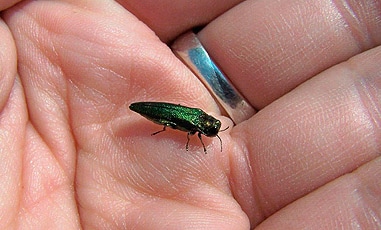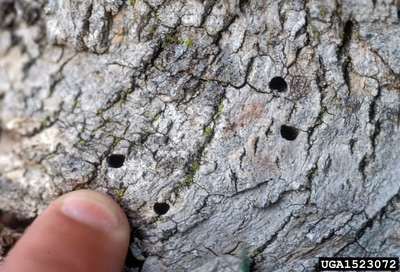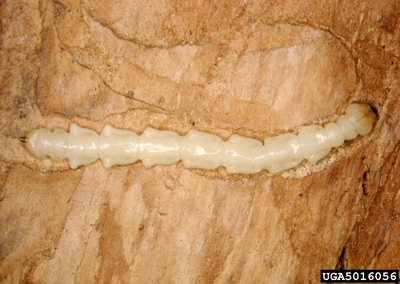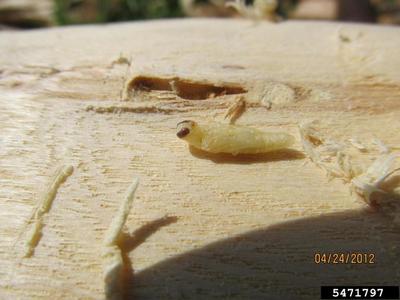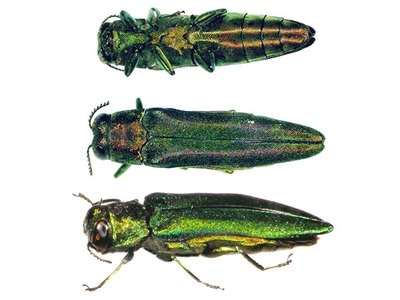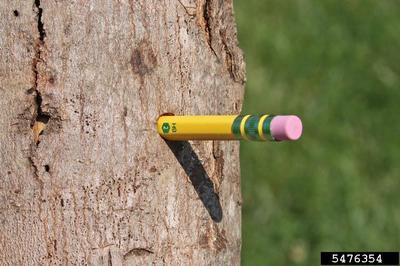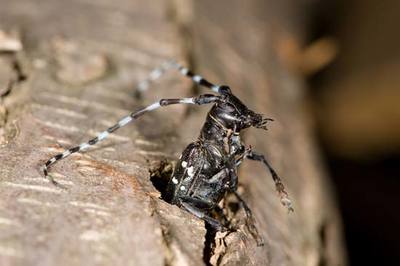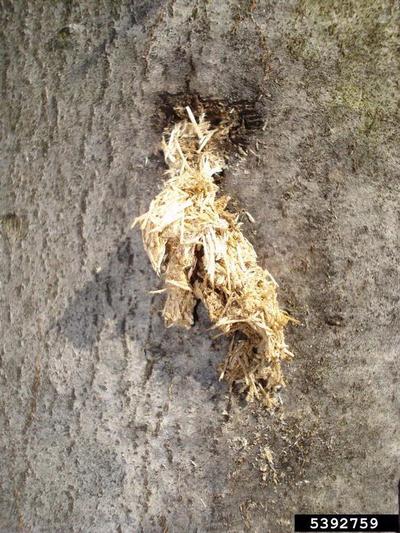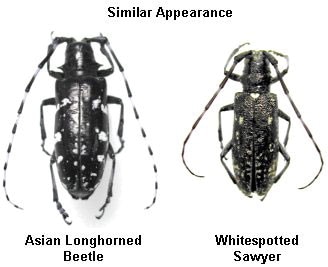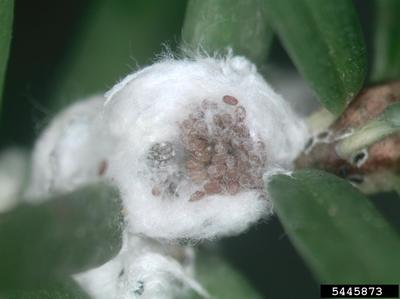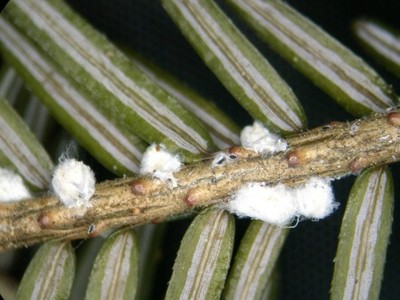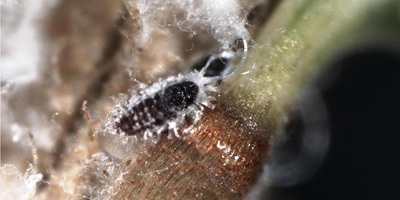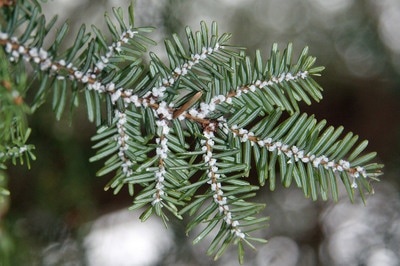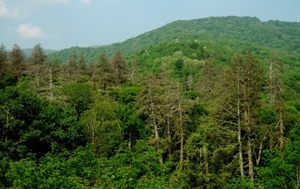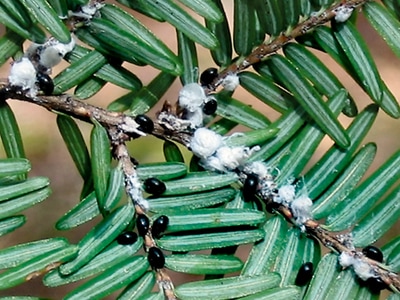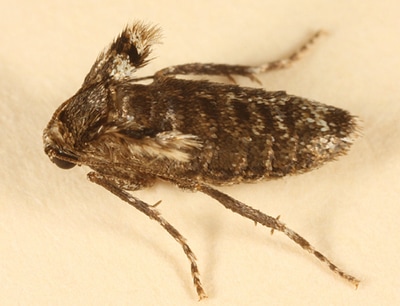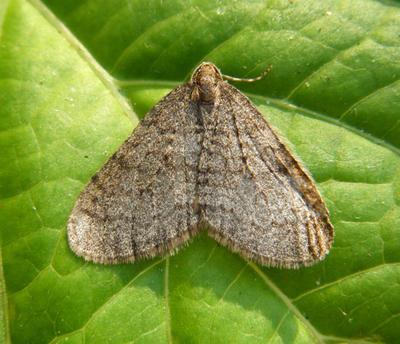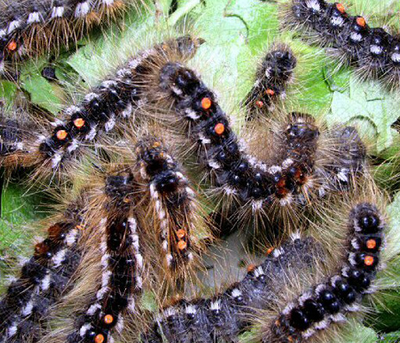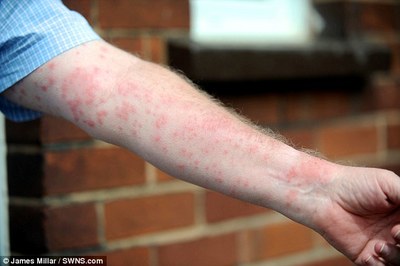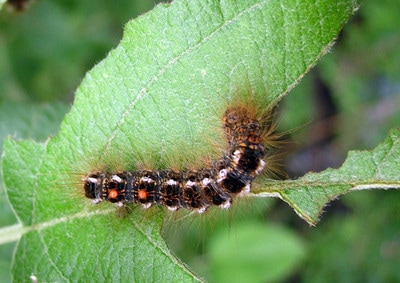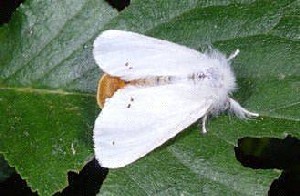Maine Invasive Forest Pest Update:
February 2022
Emerald Ash Borer:
- Adult beetles are metallic green and about 1/2 inch long.
- Attacks only ash trees.
- Adults leave a D-shaped exit hole in the bark when they emerge in the spring.
- Larvae creates signature S-shaped tunnels under the bark while feeding.
- Woodpeckers eat EAB larvae; heavy damage could indicate infestation
- Out of state firewood is banned from entering Maine to reduce the risk of EAB.
Asian Longhorned Beetle:
- Asian Longhorned beetle can often be mistaken for a Whitespotted Sawyer. ALB does not have a white spot on the scutellum, located below the head on the beetle. ALB is also a very gloss black, like patent leather, whereas the Whitespotted Sawyer is more of a bronzy-black with a coarser texture.
- ALB will chew their way out of the tree leaving, 1/4 inch or larger, perfectly round exit holes.
- Adult females chew oval depressions, egg sites, into the tree.
- As the larvae tunnel and feed, it often pushes sawdust-like material or excrement from the hole onto the ground of the tree and tree branches.
Hemlock Woolly Adelgid
- Hemlock woolly adelgid can be found in southern coastal Maine all the way east to Lincoln County.
- HWA is a small aphid-like insect covered with a white, waxy wool-like material, not to be confused with a spider egg sac.
- The wool-like masses can be found on the undersides of hemlock branches where the base of the needle meets the twig.
- HWA causes needle loss, crown thinning and die back, and eventually tree mortality.
- The Sasajiscymnus tsugae beetle has been released on occasion as a form of natural control.
Elongate Hemlock Scale
- Elongate hemlock scale has been found in southern Maine and Kittery Point.
- EHS is a member of the armored scale insects. The scale ranges from 0.1mm to 2.0mm and has a yellow-brown parallel-sided waxy covering.
- This insect causes needle mortality, crown thinning, tree decline and mortality.
- Branch dieback starts in the bottom branches of the crown. If there is a presence of hemlock woolly adelgid and elongate hemlock scale together, this decline may be more rapid.
Winter Moth
- Primarily defoliates hardwoods (oak, maple, ash, cherry, apple) and are established in Maine.
- Larvae are pale green inchworm caterpillars.
- Adult males are a delicate tan moth. Female moths have vestigial wings but cannot fly and are most easily found by investigating the focus of male moth activity.
- The winter moth are closely related to the native Bruce spanworm moth and need dissection or DNA analysis are required to tell adult males apart.
- Feeding by the winter moth caterpillars begins before buds burst in the spring. Expanding leaves will open up and already be damaged by the early feeding.
Browntail Moth
- Feeds on hardwoods (oak, shadbush, apple, cherry, beach plum, and rugosa rose) and is established in southern and coastal Maine.
- The larvae are large, about 15 inches long, and have a broken white stripe on each side of the body and conspicuous, unpaired, reddish spots of the posterior end of the back.
- Feeding begins in the early spring and damage is visible as the leaves unfurl. After overwintering, larvae hatch in the summer and they will skeletonize the leaves and tie them with silk to the host branches. This creates the very characteristic web.
- This can cause tree mortality but it is important to note that the hairs of the insect can cause a wide range of human health symptoms from mild to severe.
Maine Forest Service
Forest Health and Monitoring
50 Hospital Street
Augusta, ME 04330
(207) 287-2431
Forest Health and Monitoring
50 Hospital Street
Augusta, ME 04330
(207) 287-2431
Do not hesitate to report a finding!!
Find Us At:254 Goddard Rd
Lewiston, Me 04240 |
Contact Us:Project Director, Emma Lorusso
(207) 241-5374 [email protected] Technical Director, Sarah Torresen (207) 241-5377 [email protected] STAY UPDATED BY ADDING US ON : |

